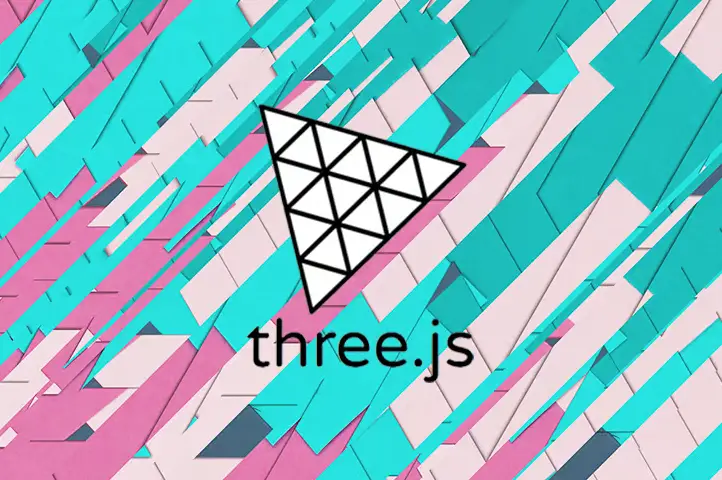What is Three.js?
Three.js is a popular, open-source JavaScript library for making it easier to create and display three-dimensional graphics on the web. It was created by Mr. Ricardo Cabello, released in April 2010, and is made on top of WebGL, which is a low-level JavaScript API used for rendering 3D graphics in web browsers. With Three.js, it is easily possible to create and alter 3D scenes and objects without direct interaction with the WebGL API and thus makes it more approachable and user-friendly.
This enables the creation and animation of 3D objects, the adding of lighting and shadows, the applying of textures and materials, and the construction of complicated scenes. A number of helper classes and functions are also included for making tasks, like camera movements, object positioning, and collision detection, easy. This makes Three.js a great tool for creating beautiful visualizations and games on the web; hence, it has earned wide adoption among developers and designers around the globe.
Key Features & Benefits of Three.js
Three.js has a plethora of features, really making it a jack-of-all-trades when it comes to 3D graphics on the web. Here are some of the key ones:
- Easy Scene Creation: Rendering and maintaining 3D scenes is pretty elementary.
- Camera Options: Offers a variety of camera options, including PerspectiveCamera and OrthographicCamera.
- Object Manipulation: Easily add and manipulate 3D objects.
- Lighting and Shadows: Support for various types of lighting, plus shadows.
- Textures and Materials: Applies different textures and materials to the objects.
- Animation: It provides animation of 3D objects.
- Helper Classes: For common tasks like Camera controls, Collision Detection, etc., are managed using several classes.
The above highlights make Three.js very useful for developers who want to build interactive, visually engaging 3D web applications.
Unique Selling Point:
Easy to use, Extensive Documentation, Large Community for support and collaboration.
Three.js Applications
Three.js is used in various applications across domains, which includes the below:
-
Gaming:
Web-based 3D games with rich graphics and high interactivity can be developed using Three.js. -
Data Visualization:
It can be used to create complex live graphs, making possible the potential to understand and represent data in a much better way. -
Education:
Used for the development of interactive educational tools and simulations. -
Architecture:
Used to create 3D models of buildings and structures and for representing virtual tours and presentations. -
Advertisement:
For the creation of attractive 3D ads and product visualization.
How to Use Three.js
Here are the steps to use Three.js in a web project:
-
Download Three.js:
Either obtain the latest version from the website or download it from NPM via a package manager. -
Include the Library:
Add the Three.js library to your HTML file within the head through a script tag. -
Create a Scene:
To make a new scene, just create a new instance of the Scene class. -
Create a Camera:
Create an instance of some camera class — probably one of PerspectiveCamera — and configure its properties. -
Add Objects:
Add several 3D objects and lights to a scene. -
Render the Scene:
Create an instance of a renderer, add it to your webpage, and then render the scene.
With these steps, you can begin to build your 3D web applications on top of Three.js.
How Three.js Works
Three.js is a library supported on the WebGL API, which is used to render 3D graphics. It abstracts the complexity of the WebGL interface in order to simplify the use for developers. It’s based on a scene to which objects are added. Afterward, a camera setup and a renderer to render this scene need to be set up. It is designed to correctly display scenes by applying a huge variety of algorithms and models in its lighting, shading, and animation techniques.
Pros and Cons of Three.js
The advantages of using Three.js include the following:
- It is open-source and free to use.
- It has extensive documentation and tutorials.
- It has huge and active community support.
- Highly customizable and flexible.
Now, some of the drawbacks are:
- Steep learning curve for beginners.
- Performance can be an issue with very complex scenes.
- Limited built-in support for physics and collision detection.
Overall, user feedback has been pretty good; many have praised its ease of use and powerful capabilities.
Conclusion about Three.js
Three.js is easily one of the richest, most powerful ways to render 3D graphics on the web. It is intuitive, with complete feature implementation and a vibrant community of developers. On the downside, while it does come with more elevated complexities in its use and some performance limitations, its advantages significantly outweigh the disadvantages. Further evolution of web technologies will bring even more enhancements and uses for Three.js.
Three.js Frequently Asked Questions
Is Three.js free?
Yes, Three.js is a libre library. You can use it cost-free and redistribute its code. If 3rd-party companies provide commercial support for it, that is where third-party costs may be included.
Which web browsers has support for Three.js?
All major web browsers today support Three.js, which includes Google Chrome, Mozilla Firefox, Safari, Microsoft Edge, etc. It is possible that not all functionalities will work as expected in older browsers.










